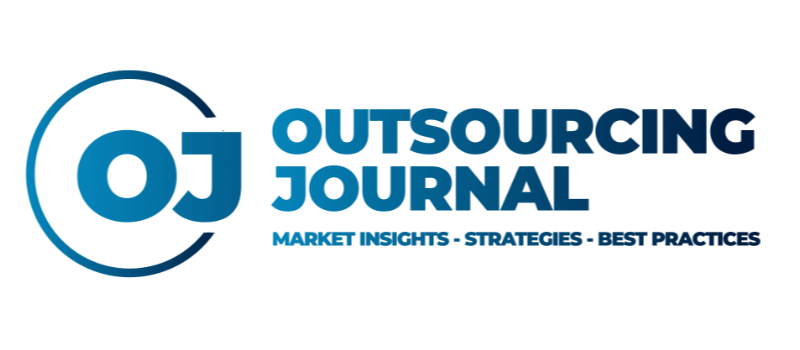[vc_row][vc_column][vc_column_text]By Lucas Hendrich, BairesDev – While this fall may not be the full return to office that many companies were planning for, it does mark another important milestone: a time when corporate leaders can stop investing in tech because of urgent needs and instead focus on strategic investments. This presents challenges, but also significant opportunities. Regardless of the return to office plan, the focus must now shift to better supporting a long-term remote workforce and enabling seamless transitions in hybrid spaces for the foreseeable future.
Keeping up with the new digital environment poses risks for large and small businesses, particularly when it comes to data breaches and financial risks, including overspending on technology implementation. Businesses need comprehensive strategies for acquiring and implementing new technologies to avoid unnecessary risks. And, even before putting together a technology strategy, leaders accurately assess their current company infrastructure in order to lay a proper foundation for digital acceleration to be successful.
New return to office plans, new tech investments
As businesses transition to the next phase of work, whether it be an extension of remote work due to the Delta variant or returning to the physical office space, it’s critical that business leaders recognize that technologies that worked during the strictly remote period may no longer be the most efficient. While many businesses’ wallets are still contracted from the lockdowns, investment now can pay dividends later.
Tech priorities change depending on the needs of the organization, but security should be a universal priority across all industries given the recent uptick in hacks and breaches. To ensure organizations are protected, business leaders should implement cyber tracking systems to notify leadership if a system has been breached. In addition to security, business leaders should prioritize updates to internal business systems to ensure they are fully functional as well as updates to cloud computing software in the organization.
Still, purchasing technology and implementing it successfully are two different challenges. Outsourcing technology employees is a viable option for businesses that are looking to invest in new technologies, but may not know how to implement them. Outsourced teams can provide the necessary knowledge, support, and guidance to work with organizations to identify and implement new tech within an organization to avoid common pitfalls.
You do not have to – nor should you – invest in every new innovation
It’s a common misconception that the most technologically advanced organizations are those that implement the latest tech, but that’s not always the case. Organizations that implement technology strategically and with a long-term plan for continued updates almost always see the best return on investment.
The technology space can be overwhelming, and the pandemic has accelerated the rate at which organizations are technologically evolving. In order to stay ahead of the curve, business leaders must engage staff and ask what technology is absolutely necessary to reach the top business goals. There were many organizations that implemented the latest technology during the pandemic, but didn’t outline a strategy for how that tech was going to be used within the organization – by failing to strategize, businesses often found their tech adoption to be unsuccessful despite the fact that the tech was new.
Playing whack-a-mole with immediate technology needs doesn’t have the payoffs that businesses are looking for. Businesses should take a nuanced approach that addresses immediate needs, anticipates near future needs, and engages in collaboration with the people using the technology on a day to day basis is the best formula for success. By having a robust plan for tech implementation, businesses will save both time and money and avoid common challenges with new tech adoption, including the inherent speed of digitization during the pandemic as well as the lack of IT capabilities to lead the implementation process.
Customized is almost always worth the extra investment
Cookie cutter tech solutions were all the rage during the pandemic as businesses scrambled to adapt to the new digital environment, but cookie cutter technology is not the best way to invest or the most successful. By implementing custom technology solutions, businesses will be able to tailor their tech to meet the direct needs of the organization, helping them to align tech goals with the goals of the business.
There can be more of a learning curve with custom technology as employees may be less familiar with the tech. That being said, employee education is an important component of implementing new custom tech solutions within the organization. By educating employees on the new tech, the entire organization will be on the same page about how the tools work. This, in turn, will promote organizational efficiency, and education will also make employees aware of the tech that is available to them.
Additionally, global organizations need to take into consideration the cultural aspects of digital acceleration by shifting their education to meet the unique needs of employees that are based in different areas – doing this will help the organization to run smoothly and efficiently.
After more than a year of tech investments based on necessity, it can be difficult to distinguish between tech investments that are critical to the organization and those that are not. This fall is a critical period for taking stock, looking to the future, and making the right investments that will pay off for months and potentially years to come.[/vc_column_text][/vc_column][/vc_row][vc_row][vc_column][vc_separator][/vc_column][/vc_row][vc_row][vc_column width=”1/4″][vc_single_image image=”6541″][/vc_column][vc_column width=”3/4″][vc_column_text]As Chief Technology Officer at BairesDev, Lucas Hendrich is responsible for assessing technical challenges of current projects and determining the suitable teams and approaches to solve those challenges. His aim is to develop internal processes to ensure our teams provide the highest quality of software delivery.[/vc_column_text][/vc_column][/vc_row]
